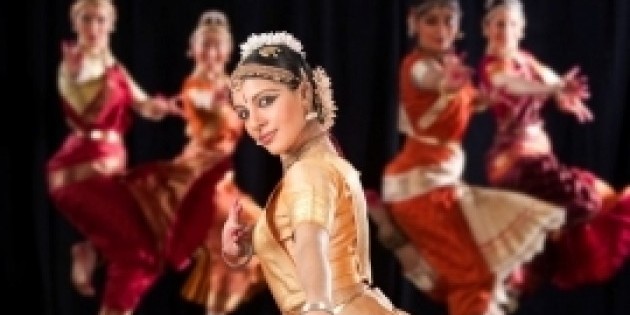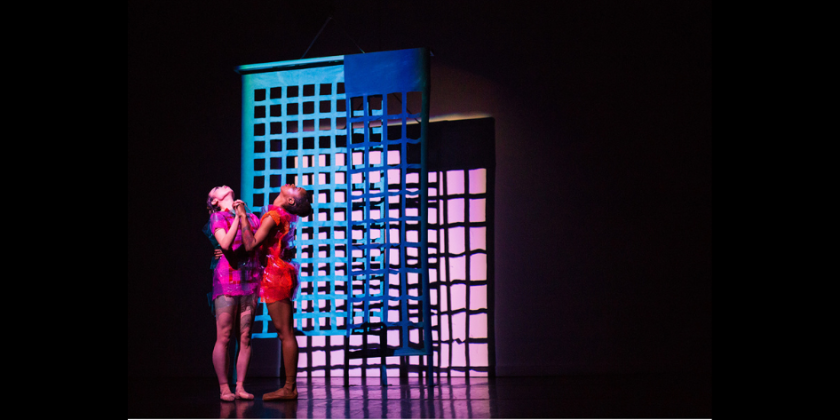THE DANCE ENTHUSIAST ASKS: Sydney Skybetter on Choreorobotics, De-Stabilizing Norms, and The Dancing Future
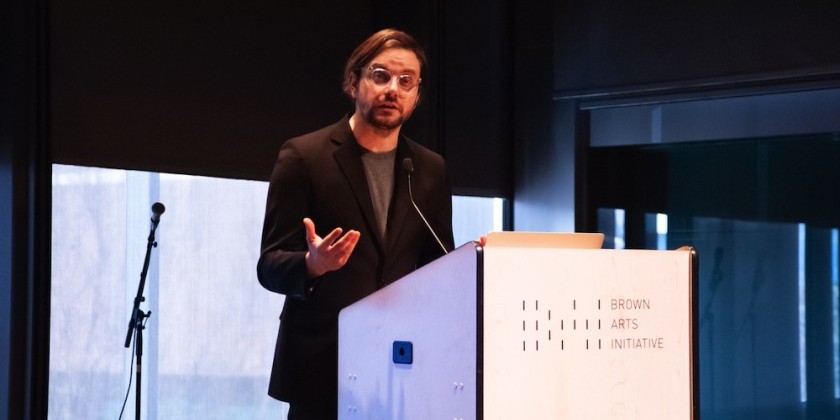
Sydney Skybetter, dancer, choreographer, and deputy dean of the College for the Curriculum and Co-Curriculum at Brown University, has spent his life investigating how bodies create meaning through movement.
In the last decade, with the emergence of surveillant technology systems and broader conversations about what cell data shows about our movement patterns, this personal investigation has evolved into a collective, interdisciplinary effort via the Conference for Research on Choreographic Interfaces, exploring the ways in which body sensing technologies are problematic, and how artists can process these challenges and advocate for change.
The Dance Enthusiast’s Theo Boguszewski speaks with Skybetter about capitalism, power structures, choreorobotics, and his Harvard keynote address, "Clock, Fall: Choreorobotics and Near Futures of Choreographic Practice."
Theo Boguszewski for The Dance Enthusiast: To start, can you share a little bit about your background as both a dancer and choreographer? Where did your interest in the intersection of dance and technology begin?
Sydney Skybetter: I've been a dancer for as long as I can remember, and I eventually went into conservatory to study choreography specifically. I've always been fascinated with how bodily movement through space and time brings about an embodied response in an audience; that choreography could make an audience cry, not just because of a plot or lexical semiosis, but because of something about how our bodies receive information about other bodies. And so this got me interested in theories of performance, audience-ship, dance, choreography and dance history, but also of power. To be able to effectively generate a vibe or a feeling in an audience member says something about how power in aesthetics and ideology and ability circulate in these spaces.
I graduated with a BFA right into the immediate post 911 milieu, when the New York dance scene was contracting. I was alarmed by the lack of jobs. And so I was like, this is obviously a good time to go back to graduate school to get a degree in postmodern compositional and improvisational strategies. Surely there will be jobs for me then. And so I graduated with my MFA into the great recession. And again, there were no jobs. And so this artistic precarity had me thinking deeply about how labor is valued and what kinds of expertise are apparently deserving of compensation.
Throughout all of this, I was deeply interested in emerging technologies, both in the moment, like online social platforms were coming of age during this time, but also historical. Like, the proscenium stage was a once emerging technology that was deeply consternating for lots of people. I was interested in this process of how technologies that shape the aesthetics of dance evolve, but specifically how they inform who gets paid.
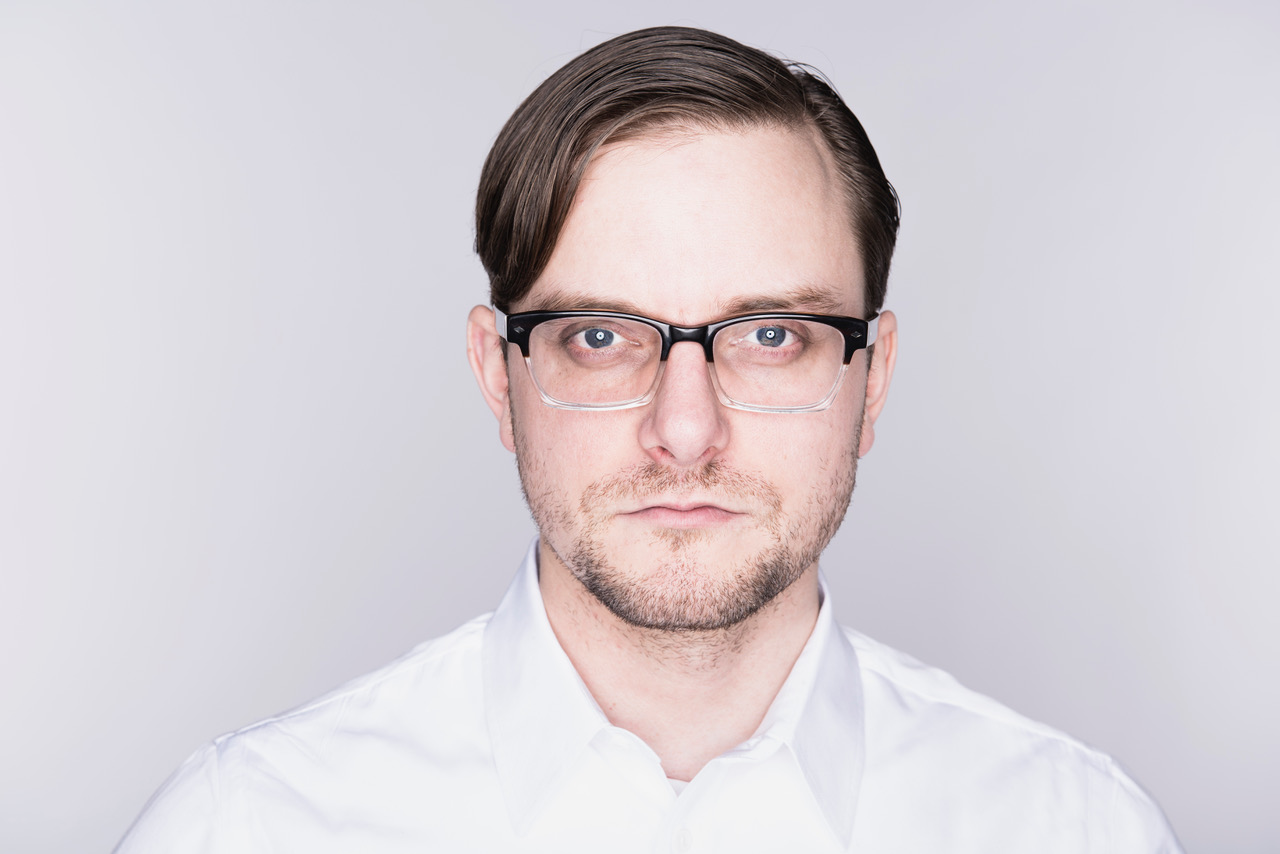
So you are the founder of the Conference For Research on Choreographic Interfaces (CRCI). Can you share a little bit about what inspired you to start the conference?
There was a moment when it became clear that Facebook was tracking users’ movements through space and time through Facebook messenger. We move through space and time constantly, and Facebook is seeking to monetize that. What are the ways that we move, and how do they signal particular kinds of intention? It suggested that at an algorithmic level, there was a possibility for discerning at scale a kind of choreographic semiotic framework that said something about how our movements through space and time created meaning under capitalism.
As a conservatory trained dancer, I've been thinking about, say, one dancer to 100 audience members, or a company of ten dancers to a large theater of 400 people. I never imagined the relationship between 1 billion people and a computer. And I realized at that moment that, on so many levels, I didn't understand what was happening. I'm not a computer scientist. I'm not a technologist. It invited a series of intensely interdisciplinary conversations about how bodies signify, and how bodies and computational systems interface with one another, but also at the level of history and surveillance and race. This is around when I was introduced to the work of Simone Brown. Her Dark Matters: On The Surveillance of Blackness has a lot to say about these surveillance systems as a contemporary instantiation of explicit anti-blackness.
A lot of the surveillance modes that Facebook deploys are directly related to things that originate within policing and domestic defense structures. And this isn't a coincidence; the iPhone was coming out in vogue. The nest thermostat had gestural interfaces that allowed you to make movements to communicate with computers. These things were all coming online simultaneously. And it just struck me again that the centrality of the body for these interface modalities was both a creative opportunity, but also a potential surveillance clusterf**k. And so the original conferences were an attempt to bring together nerds with very different positional understandings of these problems, ranging from human computer interfaces to robotic design to improvisation to choreography to dance history, to try and solve these problems collectively.
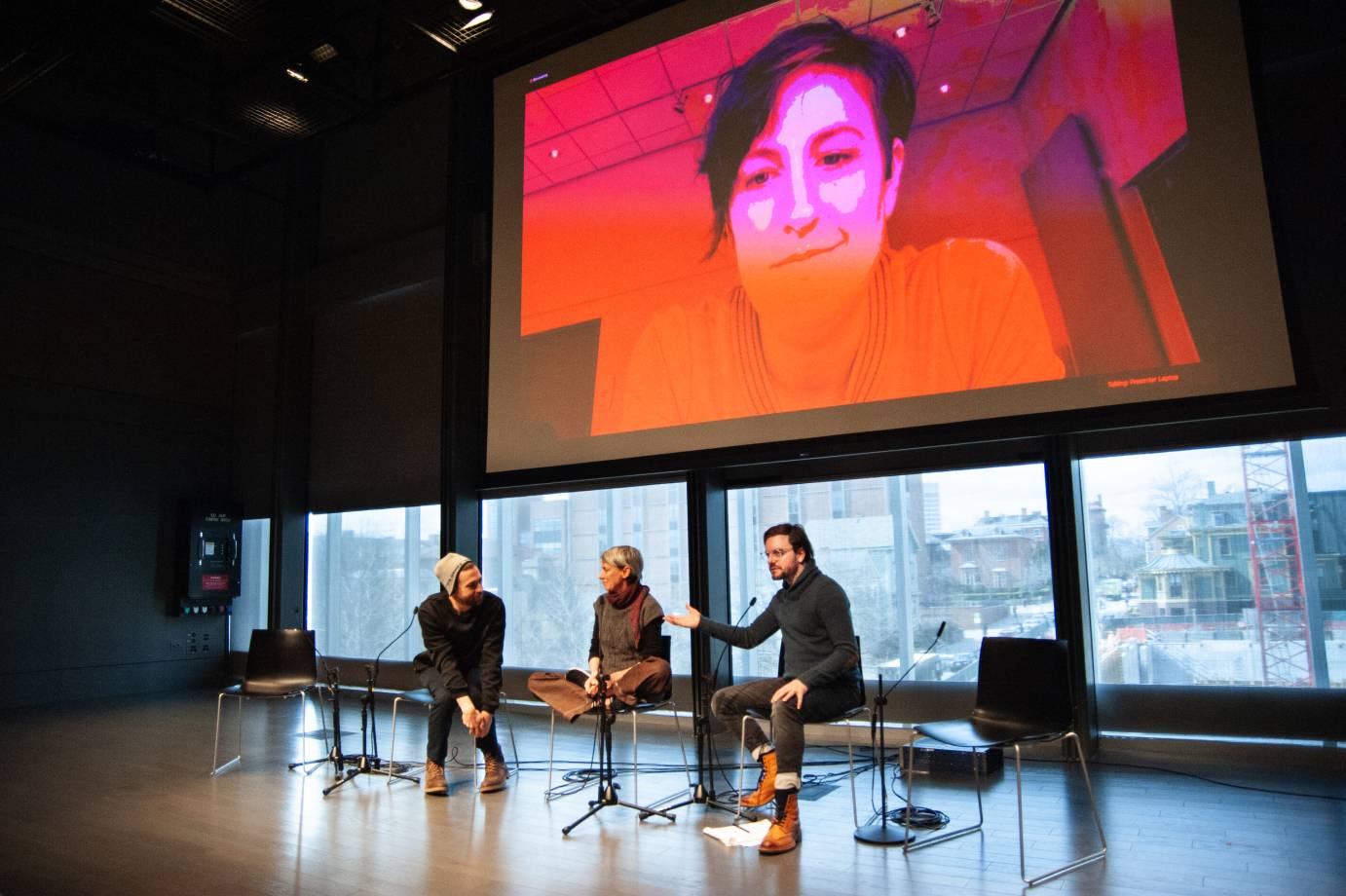
Sydney Skybetter among the panelists at the Conference For Research on Choreographic Interfaces (CRCI). Photo: Keira Chang
And, I should say that the conference is a deeply collaborative effort. Our executive producer, Arianne Michaud, her leadership and stewardship of this venture from the earliest stages are really important.
Outside of being a forum for dialogue and ideation, what have some of the other outcomes been of CRCI? Is it art making? Research papers? Some sort of larger system change?
Yeah, so all of those things. We commission and have in residence artists every year. We are very engaged in direct artist support. But also, there's any number of startups or creative collaborations or career trajectories that veered one way or the other through the CRCI effort. For example, the work of choreorobotist Catie Cuan, who recently got a PhD in choreorobotics at Stanford. Catie was in the opening nerd gaggle of twelve or so people back in 2015, and has been so involved in our programming and so instrumental in our work that she actually rededicated her creative practice towards the choreorobotic.
And Catie’s not the only one. To put it slightly differently, this question of labor and affording artists access to resources, as in money or jobs, is a spirit that pervades the enterprise. We also now have a podcast, Dances with Robots, that is the direct result of this convening. There's been lots of creative output, and we're bringing the conference back next year.
It struck me as interesting that the forum you're using for these conversations is bringing people together; you’re centering human relationships and dialogue as a vehicle to promote some sort of change in the digital sphere. It seems to me like an acknowledgement that humans, working together, can come up with better solutions than the robots can.
Yeah, I know it totally does. And this is one of the reasons why, while I am concerned with how these technologies work, Chat GPT3 or a robot is not going to come for dancers’ jobs. I am not concerned with labor replacement at that level. I am concerned for how these technologies, through the apparatus of surveillance and capitalism, displace resources and concentrate them in the hands of people who shouldn't have that much resources, further disempowering artists, folks of color, disabled folks, femme folks.
I'm curious how you think the recent widespread accessibility of AI tools like ChatGPT in the last year are impacting these conversations.

I think they're precursors for the state of the arts and of journalism. For me though, any conversation around generative AI, I'm only interested in it in so much as it acknowledges the political and ideological ramifications that these technologies have on people. So much of the data that feeds or trains these systems is intensely processed by people. And frequently folks from the global south who are paid excruciatingly little; the appearance of autonomy is actually preconditioned on thousands of people hours to supposedly train this autonomous system. I'm thinking of a recent presentation at South by Southwest by a robotics company called Aptronic. They make a robot called Apollo. They fed Apollo YouTube videos of Yemi A.D., who's a Czech Nigerian choreographer, Black male presenting. And it's interesting to me that the brilliance of the robot, the genius of the engineering, is still preconditioned not just on the extraction of expertise from a dancer, from a dance artist, but specifically from a Black man. And so, even though it's a brave new future, it's still contingent on certain forms of labor extraction and potentially exploitation.
Can you just share a quick overview of the evolution of choreorobotics? How would you define choreorobotics in a couple sentences?
Choreorobotics is a contraction, of course, of choreo as in choreography, and, robotics as in robots. The field of study is in the specific interaction of dance theory, choreographic practice, and robotic motion planning. These are separate fields that over the last couple of years, have been increasingly in relation.
How do you envision choreorobotics integrating into traditional dance performance spaces?
Yeah, well, Beyonce's doing it, so that's something. As part of the Renaissance tour, Beyonce is literally deploying robots as performative installations.
I don't anticipate that there's going to be robots on the floor of The Joyce anytime soon, but it's interesting to me that Jacob’s Pillow, which is rebuilding the Doris Duke Theater, is imagining a dance future where sometimes you need to get a robot in an elevator.
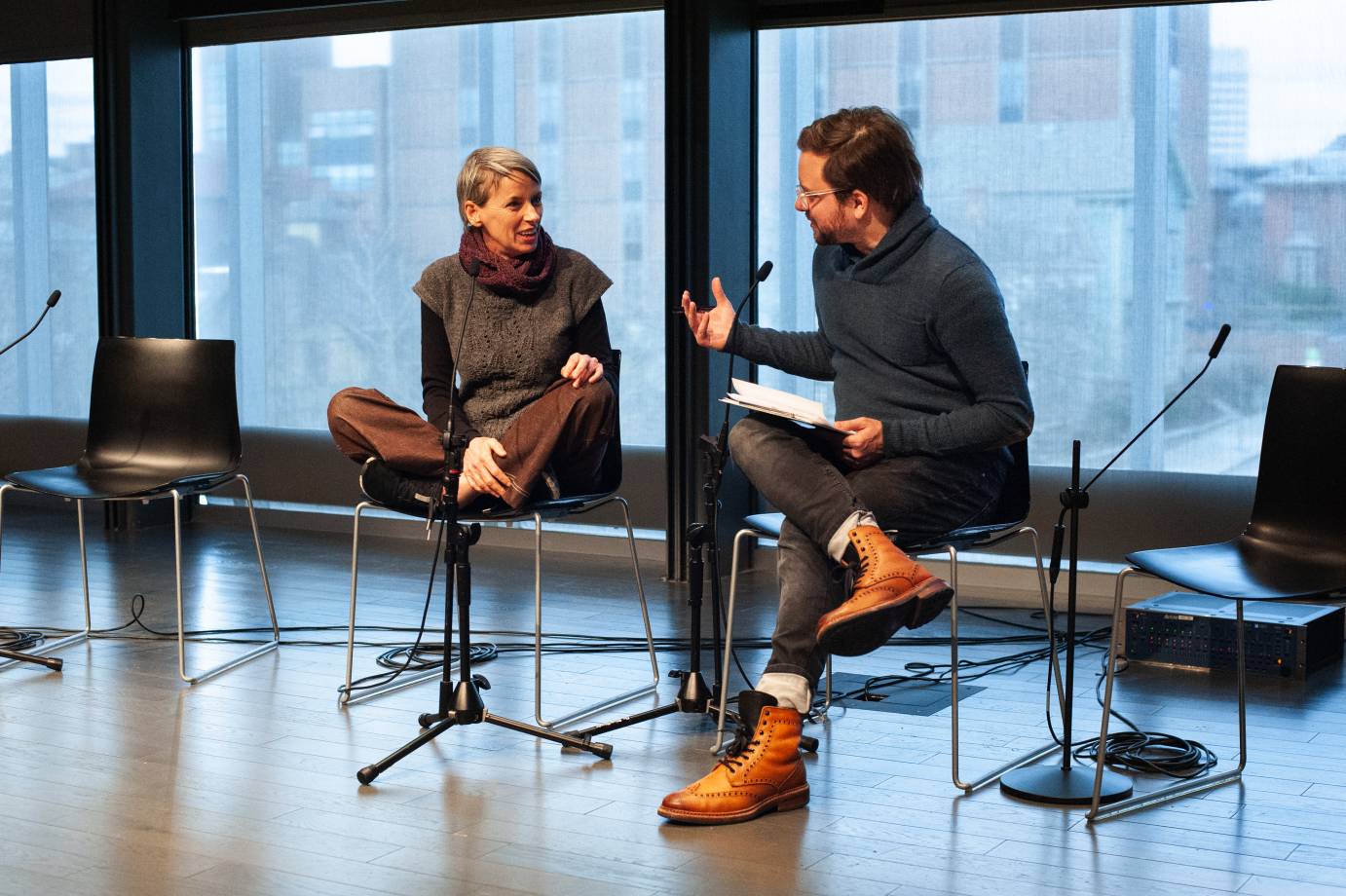
Let's shift to your keynote seminar, "Clock, Fall: Choreorobotics and Near Futures of Choreographic Practice." What are some of the key themes and concepts that you're planning to address? And, can you give a little context around what it means to give a keynote and who the audience is?
So I delivered a keynote for the Mahindra center and Metalab at Harvard. Mahindra is a gathering spot of largely performance theorists, and Metalab, with whom I've been affiliated for many years, is interested in the interdisciplines. That Mahindra and Metalab are coming together to support this keynote is suggestive of the interrelation of performance theory and practice, which my work absolutely embodies, but also, it's just a prodigious honor.
In terms of the audience, there were a couple different constituencies present. On one hand, there were folks live in the room, largely from the Boston/ Cambridge area. But we were also streamed, and the keynot will be archived and put on the Internet. So the idea is that this material will have multiple audiences.
My hope with the keynote is not to argue that dance artists should all be playing with robots. We started this conversation to gesture towards the structures of power that inform these seemingly novel performances, and gesture to the long histories of labor extraction and racism and violence that presuppose these things. The root word of the word 'robot' is famously 'robota,' from the Czech word meaning 'slave.'
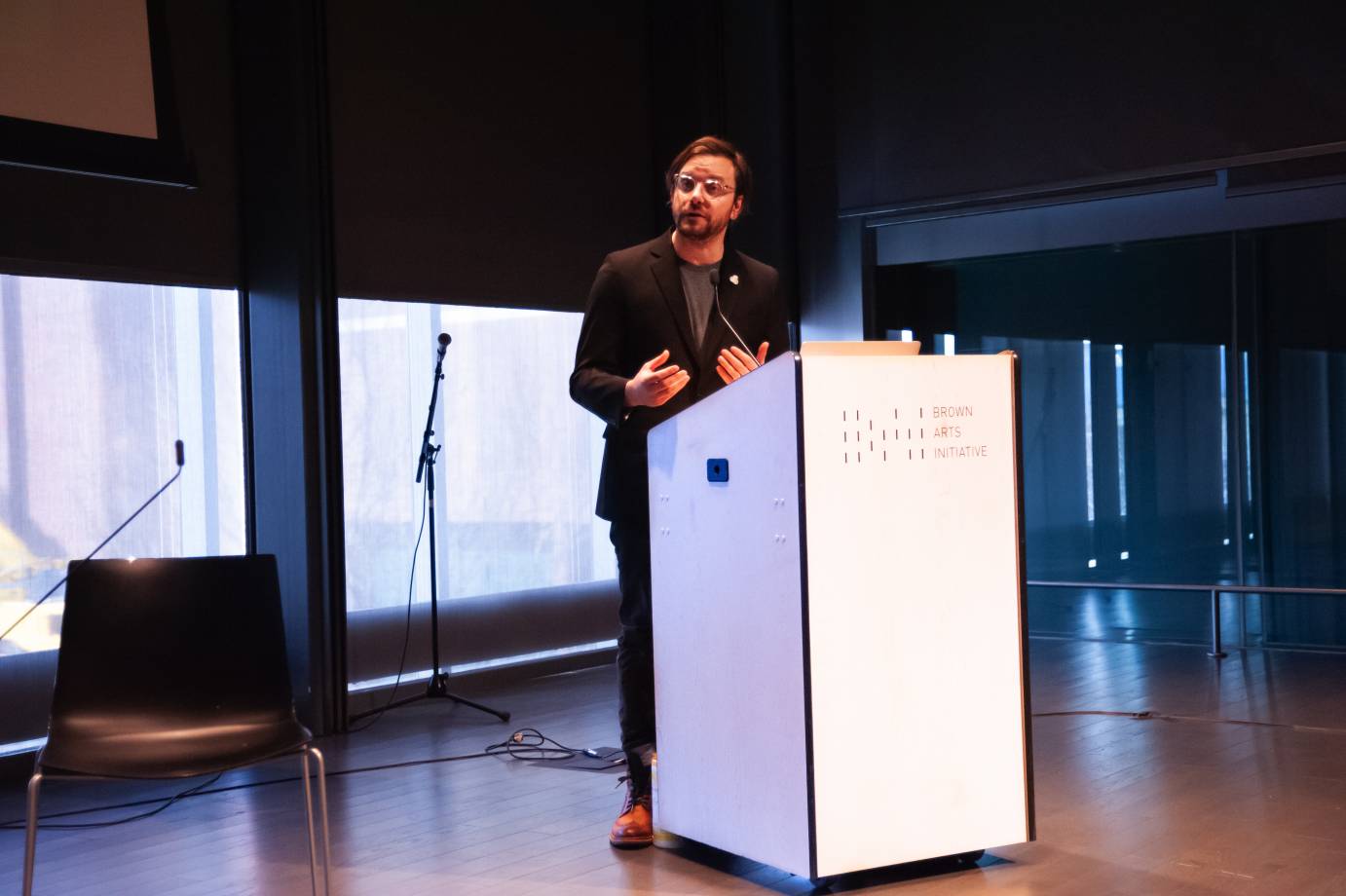
My hope is to proliferate these kinds of conversations around bodies and power and violence and emerging technologies so that other folks can join me in this work.
I represent a small coalition of nerds who are deeply invested in advocacy and change. I would love for nothing more than for that coalition to grow and for our strength to effectively destabilize some of the norms in this field, dance technology and otherwise.







